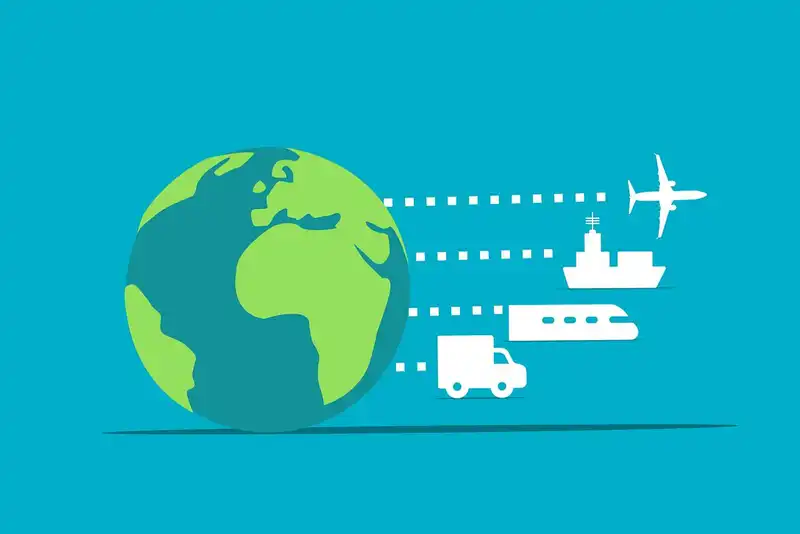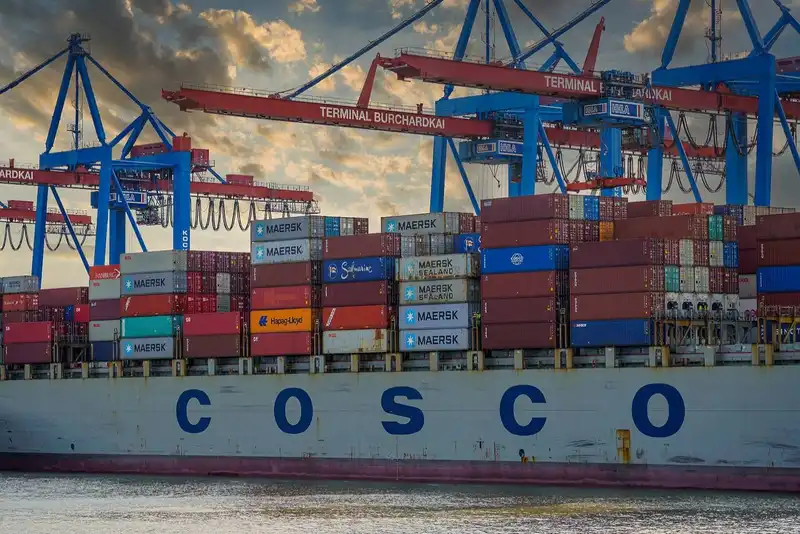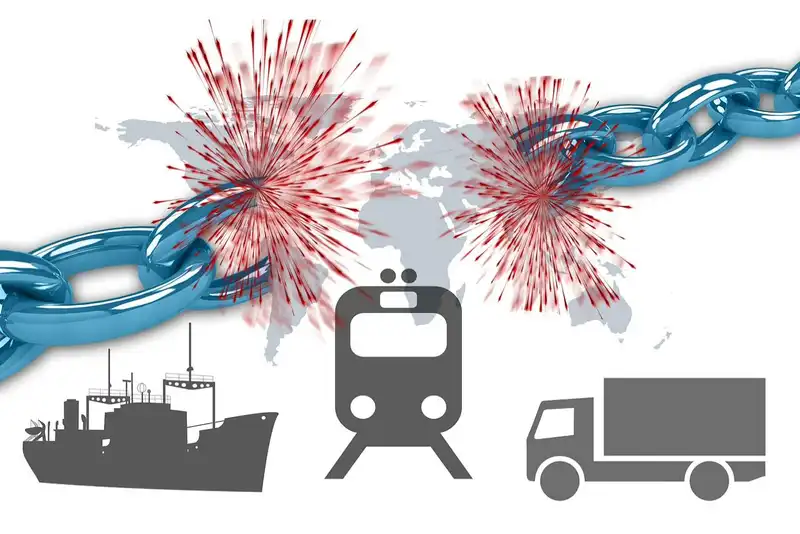What is a supply chain?
Some may know it as the process in which materials are used to create a product that ends up in your hands. Supply chain consists of a number of different steps, including purchasing raw materials from suppliers, creating those raw materials into finished products and then distributing finished products to the end user. Supply chain management is created for businesses looking for ways to increase efficiency, reduce costs, and reduce risk. If you're interested in learning more about how supply chain works, check out this article.
Global to Local- 5 Reasons Your Restaurant Supply Chain Should Make the Switch
What is a Restaurant Supply Chain?

A restaurant supply chain is a set of processes that begins with the procurement of raw materials to delivering the final product to the consumers. A restaurant has various elements like purchasing raw materials, cooking food, taking orders, dining, billing, and other backend processes. Effective supply chain management enhances the competitiveness of the restaurant and helps you attain major cost savings. With the advent of various digital supply chain solutions, technology plays a major role in managing restaurant supply chains.
There's little or no room for mistakes in a restaurant supply management. A small mistake anywhere in the supply chain could lead to major issues in the whole process, which results in revenue loss and diminishing brand value. The main purpose of supply chain management is to improve customer value and achieve an edge over competitors.
Disadvantages of a Global Supply Chain
A basic food supply chain is made up of six stages.
- Sourcing raw materials
- Production
- Packaging and processing
- Storage
- Wholesale distribution
- Retail distribution to customers
1. Traceability-
Traceability is the ability to track food through all stages of the supply chain. This has become more of a demand than a request among customers. Most of the customers want to know everything; from a complete ingredient breakdown to other details of the food they consume. Having authentic information at every step of the food supply chain strengthens brand integrity, enhances food safety, and improves customer loyalty.
2. Lack of communication
Fragmented information and lack of proper communication impact food supply management in a big way. This happens when the parties involved in the whole process of supply chain management do not know others' actions. There are multiple instances in which different individuals within the supply chain of the same commodity never interact. Poor communication causes inefficiency, food waste, and mistrust among suppliers and customers.
3. Inventory control
Inventory tracking and control are extremely important in supply chain planning and management. To control costs and maintain quality, inventory has to be managed effectively. If it is too much, it will spoil and go to waste. If it is too little, it may disappoint your customers. As a restaurant owner, you have to keep a fine balance to keep your customers happy, managing the inventory, and keeping the waste low.
Your one stop shop for the latest news
Subscribe and stay informed about everything restaurant and food related!
7 Benefits of Sourcing Raw Materials Locally

Localizing your food supply chain is critical for a great business as it offers economic, social, and environmental benefits. Post-pandemic, things have changed in a big way globally as well as locally in supply chain management. The pandemic has put a spanner in the works of most operations and created havoc in global shipping. This has led to shortage of a wide range of goods.
It is therefore advisable to source raw materials locally. This will promote sustainability and promote local culture. Let's delve deeper into the seven benefits of sourcing raw materials locally-
1. Helps the local community- When you source raw materials locally, it improves the economy of food suppliers in your backyard. This enables them to become self-sufficient. Working with local vendors creates more jobs in their respective communities.
2. Environmental impact- Sourcing goods from the other side of the world creates pollution, biodiversity loss, damage to ecosystems, toxic waste, and a host of other problems. Localized sourcing or on-shoring is more sustainable to the environment as it leads to more responsible production and consumption of fuel.
3. Minimizes risk- The pattern of global supply chain disruption witnessed during the pandemic may become the norm. Going forward, there are chances of environmental disasters, fuel shortages, labor restrictions, and so on. Sourcing raw materials locally can mitigate these factors.
4. Improves vendor diversity- Restaurant supply chain solutions are inspired to move towards inclusion and diversity in their supply base. When they source raw materials locally, restaurants can help women and minority suppliers to balance inequalities in their sectors.
5. Reduces unnecessary costs- During times of volatility, business needs to conserve their resources. You need to implement innovative technology to do this. With the help of AI-driven solutions, businesses can track costs more accurately than before, and reduce them by localizing the supply chain.
6. Streamlines business complexity- Coordination of global supply chains are enormously complex. It requires complicated logistics with shipping, freezing, packaging, and so on. When you localize the supply chain, it minimizes management hurdles and thereby improves the efficiency of a business.
7. Greater control- The farther you are from elements of your supply chain, the lesser control you have over them. Following the pandemic, this has become a serious concern for both suppliers and buyers. When you buy products locally, there are fewer chances of matters getting lost in translation.
How Can Efficient Supply Chain Management Profit a Restaurant?
In order to build a reliable supply chain, restaurants must establish a positive relationship with suppliers and distributors. Like any other business, the restaurant industry depends on its relationship with vendors and suppliers. Poor supply chain management may affect the entire business, and interrupt the steady supply of food, beverages, napkins, cups, and so on needed by the restaurant. A well-maintained supplier relationship makes sure that you get materials on time so that you don't face stock issues daily at your restaurant.
Apart from vendor management, supply chain forecasting is vital for the smooth functioning of a restaurant. In the ever-changing restaurant industry, it is important to sense the demand for certain dishes or ingredients. This helps optimize your supply chain for minimum financial waste. To know what's in demand, you need to get data and reports generated by your inventory management software and POS system.
Superior inventory management systems like Zip Inventory will keep you abreast of your inventory and help you manage a cost-effective supply chain system. And a great restaurant POS system, like PlumPOS, will help you track sales data to understand customer preferences, so you can stock products accordingly.
4 Benefits of Supply Chain Management Software

SCM software (supply chain management software) is a tool to manage the various stages of the supply chain. It is used for vendor management, quality management, logistics, and distribution across the supply chain. Supply chain management software improves the efficiency and productivity of a supply chain, no matter how complex it is. Restaurantslife lists its benefits-
1. Visibility
Knowing what's going on in your supply chain is essential for an efficient supply chain management system. SCM software gives you a centralized view of all people, processes, and systems across all activities, offering you end-to-end insight into your supply chain. This improves transparency and increases data exchange and collaboration among suppliers, distributors, and retailers.
2. Analytics
Each stage of supply chain management produces volumes of data. It includes raw material costs, delivery time frames, sales figures, and reports. When it comes to food and beverage companies, restaurant supply chain software solutions provide real time access to this data and allow you to monitor performance and make data-driven decisions to improve business operations.
3. Improved efficiency
Inefficient supply chains cost businesses greatly. Recognizing and removing bottlenecks that cause delays to supply chain processes improves the speed of execution. Besides, integrating supply chain management software with current systems and automating various manual tasks enhances productivity.
4. Reduces costs
One of the key benefits of supply chain management software is that it helps you spot and eliminate waste and costs, without any change in the restaurant business operations. With an efficient SCM tool like Zip Supply Chain, available on the restaurant app store Hubworks, you can track each step of a supply chain, note errors, and work on them. Timely understanding of these errors helps you reduce costs, which in turn boosts profits.
Stay up to date on supply chain news
Subscribe and stay informed about everything restaurant and food related!
Top 3 Supply Chain Software Solutions for Restaurants

Competent supply chain management software is crucial for the smooth functioning of a restaurant. Listed below are the best available supply chain solutions in the market.
Hubworks
Hubworks is a back-office app store for restaurants with specialty apps that handle supply chain management, business intelligence, forecasts and reports, inventory management, and so on. Its apps like Zip Supply Chain, Plum POS and Zip Inventory are perfect for monitoring inventory goods. The different software a restaurant uses can be seamlessly woven together with Any Connector, an integrations software.
xTraCHEF
This is a cloud-based restaurant supply, vendor, and inventory management app that combines data science and machine learning to streamline supply chain operations. The software tracks every step of the supply chain by monitoring product information from multiple vendors. It even keeps an eye on product price changes. xTraChef offers a free subscription tier for supply order management and invoice management.
MarketMan
MarketMan is a supply chain management system with features like recipe costing, inventory counting, vendor management, and so on. It also integrates with a restaurant's POS system so that it can monitor actual and real inventory and alert for waste and theft in real time.
Supply Chain FAQs
1. What are the different levels of supply chain management?
There are three levels of supply chain management- strategic, tactical, and operational. The strategic level addresses the long-term elements of a business, including the type and number of facilities, vendors, and suppliers. The tactical level narrows down the means of executing the strategies, which includes production schedules, logistics processes, contracts, and software. The operational level includes the daily operations of supply chain management, like shipping, invoicing, forecasting, and so on.
2. Is cloud computing beneficial to the supply chain management process?
Yes. Cloud computing helps to track a product through its entire supply chain management cycle. Other benefits of the cloud are the ability to integrate with multiple platforms, advanced analytic capabilities, and lowering the hindrance of geographic boundaries.
3. What are the emerging technologies in supply chain management?
Big data, artificial intelligence (AI), the internet of things and robotics are increasingly used in the supply chain management sector. Restaurantslife Features specific details about these emerging technologies and challenges, including supply chain risks.
Your one stop shop for the latest news
Subscribe and stay informed about everything restaurant and food related!



